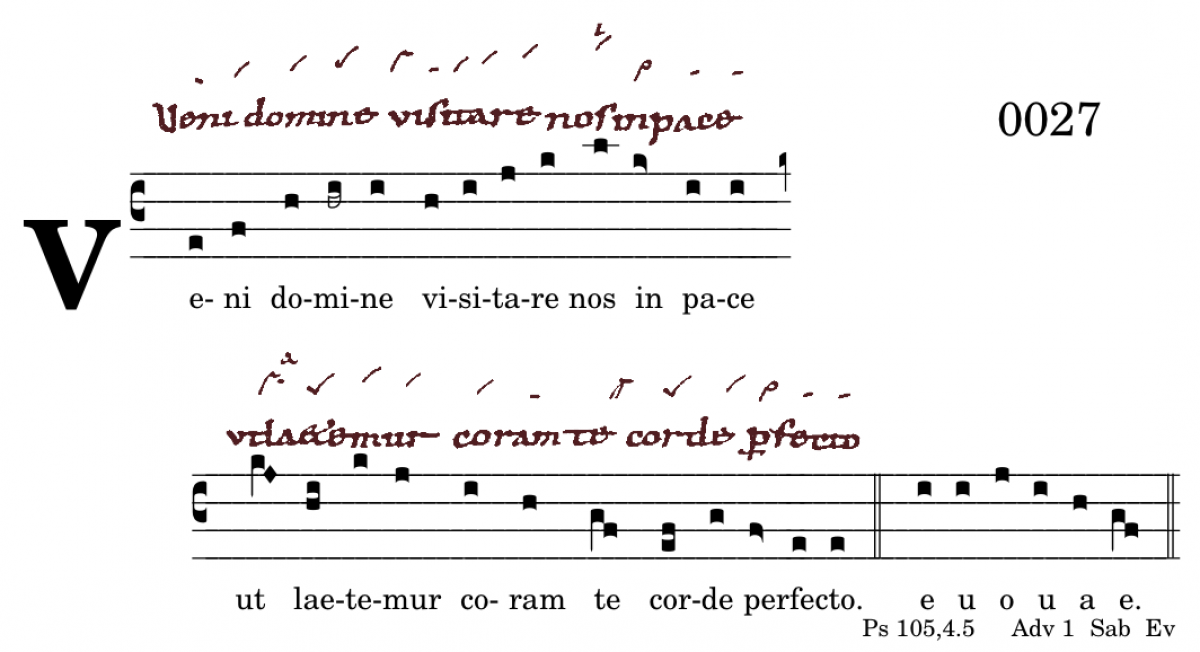Benutzer-Werkzeuge
🔘 IN GR TR AL OF CO xxxxx 1️⃣ 2️⃣ 0️⃣ 3️⃣ 4️⃣ 5️⃣ 6️⃣ ✅ 8️⃣ xxxxx AN RP IV alia
0027 AN Veni domine visitareModus 7
↖️
QINC
~ Vrg mut Die Virga mutans kündigt an, dass der nächste Cento einen Ton tiefer beginnt.
7MED altum Der centotypische Gipfelton „sol“ ist mit 'levare' abgesichert.
7MED altum
Der ~Pressus mit 'altius' kündigt an, dass der eigentliche Cento ad fa erst nachher beginnt. Die „Silbe „ut“ ist selbst noch nicht Teil der Centomelodie, wenn er auch sprachlich sehr wohl Teil des Cento ist.
7TER de si
Die VrgStr bei „domi-ne“ ist in Bv1 mit einem Zeichen notiert, das nicht eindeutig als doppelte Rhomba oder Oriscus zu fixieren ist. Oder ist es vielleicht in Bv1 doch nur das Zeichen für VrgStr?
Bei „coram té“ hängt Bv1 an den PesSbp diese Zeichen an: VrgStr für Centoübergang mit tieferem folgenden Ton?
● Komm Herr, besuche uns in Frieden, dass wir uns freuen vor dir mit reinem Herzen.
● Come, Lord, visit us in peace, that we may rejoice before you with a pure heart.
QINC
~ Vrg mut The virga mutans announces that the next cento begins one tone lower.\
7MED altum The centotypical summit tone „sol“ is hedged with 'levare'.
7MED altum
The ~Pressus with 'altius' announces that the actual cento ad fa only begins afterwards. The „syllable „ut“ itself is not yet part of the cento melody, although linguistically it is very much part of the cento.
7TER de si
The VrgStr at „domi-ne“ is notated in Bv1 with a sign that cannot be clearly fixed as a double rhomba or oriscus. Or is it perhaps just the sign for VrgStr in Bv1?
In „coram té“, Bv1 appends this sign to the PesSbp: VrgStr for cento transition with lower following note?

